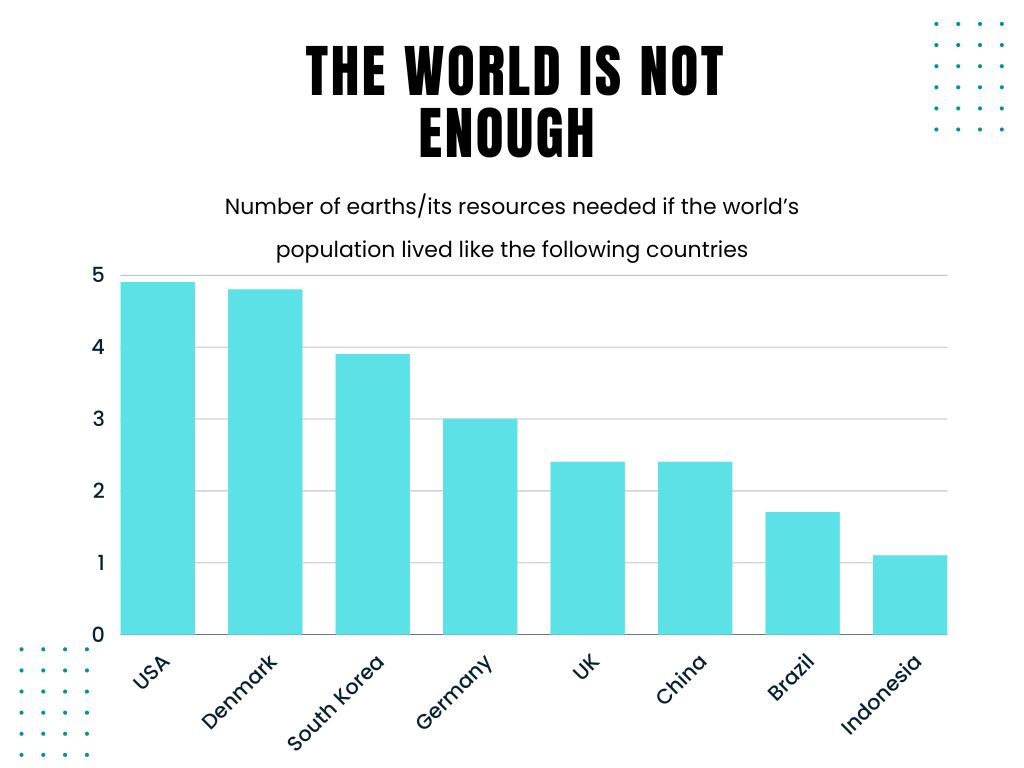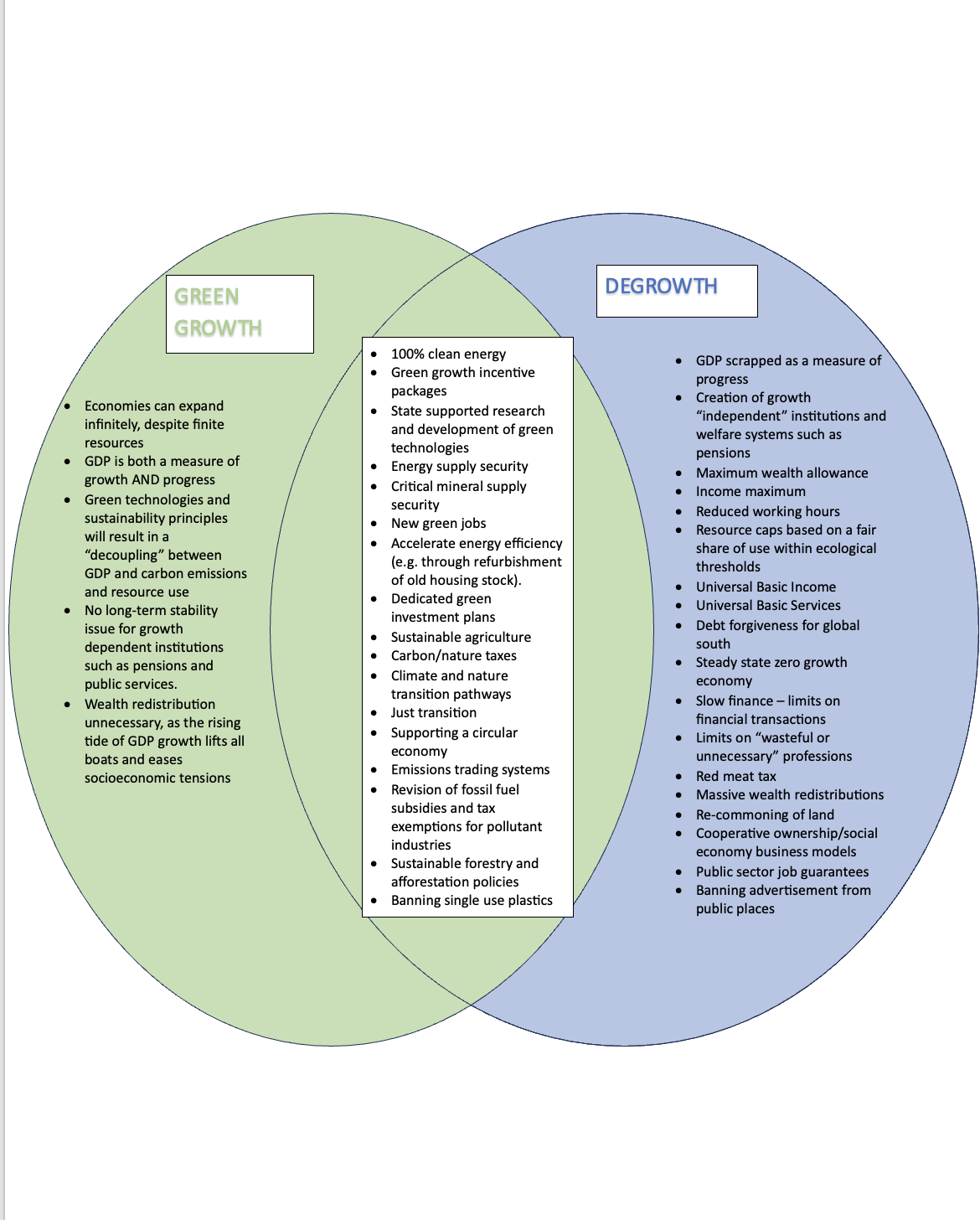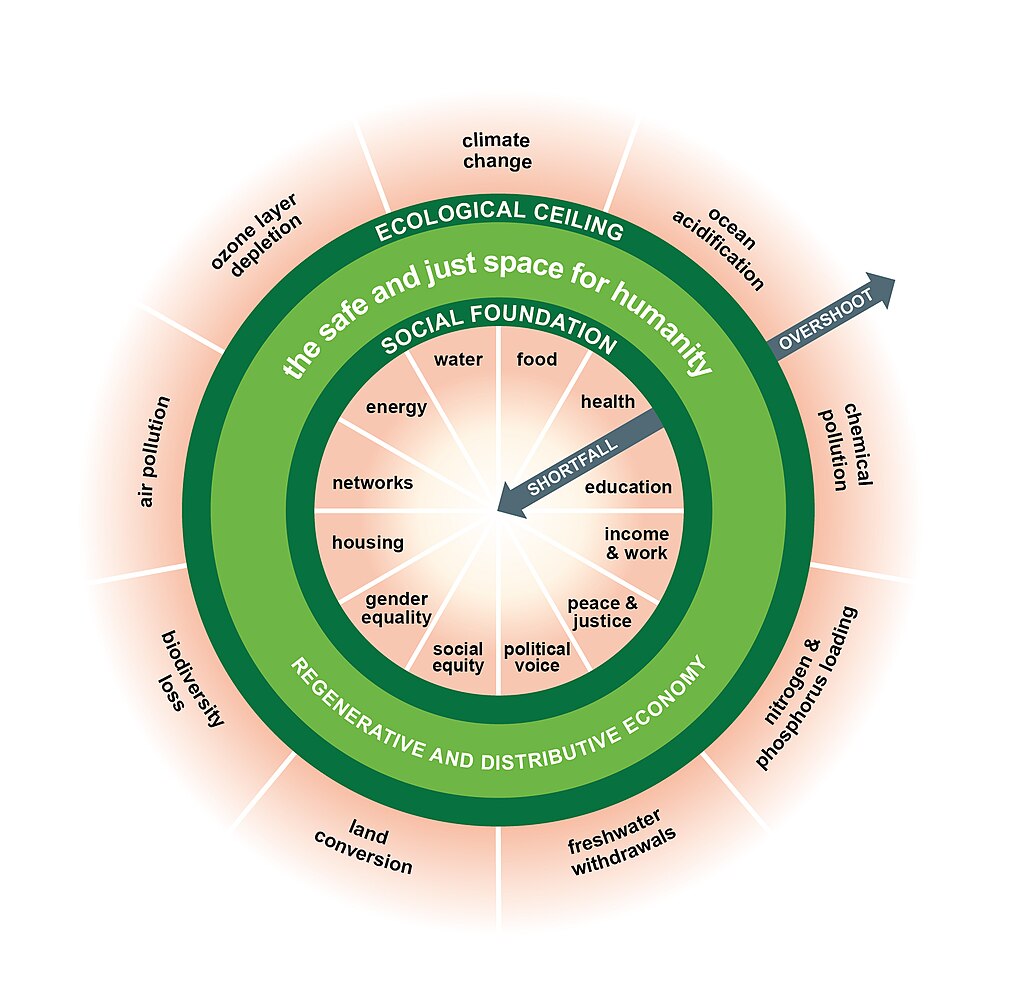
Are green growth and degrowth really so different?
As the concept of post-growth enters political mainstream, Net Zero Investor explores the dividing lines between green growth and degrowth
Those who think degrowth is still the preserve of radical academia might be surprised to learn that policymakers have not only started to listen to degrowthers but organise conferences around them.
In May 2023, European Commission president Ursula Von der Leyen, European Parliament president Roberta Metsola and various other EU notables, spoke at a three-day event innocuously titled “Beyond Growth”, which also happens to be the title of a book by green steady-state proponent Herman Daly.
Importantly, the event took place within the European Parliament. Were degrowth ideologues, who have long bemoaned the "fairy tale of eternal economic growth", finally getting mainstream acceptance?
Environmental economist Professor Rudi Kurz, who attended the conference, told Net Zero Investor that it was like “a festival for degrowthers”, even if the word degrowth never actually entered the official headline nor, bizarrely, the title of the panel events. It seems “beyond growth” or “post-growth” is a much more palatable nomenclature than the negative sounding “degrowth”. It gives the average citizen a sense of moving onto the next stage as opposed to the gloom-ridden regression-ism attached to the prefix “de”.
“Almost all the presenters were part of the post-/de-growth community,” Kurz recalled. “Everyone was delighted to be in the European Parliament. It was a special time.”
What is Degrowth?
So what is degrowth and why are policymakers starting to pay attention? Degrowth aims to tackle the challenge that the world and its natural resources are limited, but the current infinite economic expansion model requires an ever-increasing consumption of those resources.
As GDP goes up, so too does resource and energy consumption. If everyone lived like Americans, the Global Footprint Network claims that five worlds would be needed to sustain human life. Some form of degrowth – a planned retraction of energy and resource consumption – may not only be desirable but inevitable.

Living within environmental boundaries essentially requires the scaling down of harmful, resource and energy intensive economic activities, a reduction in consumerism, and a restructuring of institutions – from welfare systems to financial markets – to make them growth independent. In other words, society still needs to function and even thrive without GDP growth.
That is the basis of degrowth.
GREEN GROWTH OR DEGROWTH?
Though often pitted against each other, green growth – the idea that economies can grow their way out of ecological crisis – and degrowth aren’t polar opposites but align on key policy points. For example, transition pathways (e.g. no more petrol cars after 2035) support both degrowth and green growth initiatives. By setting a hard limit, policy makers scale down a harmful industry (degrowth friendly), but also increase the competitiveness and growth potential of the green alternative (green growth result).
The difference between green growth and degrowth lies less in immediate policymaking than the long term vision for society.
Net Zero Investor has created this Green Growth / Degrowth Venn diagram to help visualise the similarities and differences.

GREEN POLICYMAKING IS HIGHLY CONTEXT SPECIFIC
One implication of the above Venn diagram is that the transition to a sustainable economy – the economy of the future – will be less a “this or that” approach than a hybrid process highly dependent on local political and economic contexts.
For example, while the mature economies of the Global North may be suitable for degrowth-style policies, the global south is still trying to create a basic living standard for many of its citizens. Nor should the global south be held responsible for the on-going ecological crises. The consensus among most degrowthers seems to be degrowth for the global north but green growth for the global south.
Approaches even in the global north are likely to vary considerably, with the EU more open to progressive ideas, and the US – a country birthed by frontier capitalism and the promise of ever-expanding markets – retaining a sceptical distance from degrowth narratives.
DEGROWTH IS ALREADY HERE
The European Union has already started introducing degrowth “add-ons” to its dominant green growth narrative. Its “circular economy action plan” is a clear example of EU officials not only censuring wasteful consumerism but also doing something concrete about it, even if they still frame the initiative within the language of growth and competition. France has introduced the world’s first mandatory biodiversity disclosure regime for financial firms. Kate Raworth’s “doughnut economics” has entered city planning discussions in places like Barcelona.

Perhaps the European Union’s willingness to listen to degrowthers or post-growthers is partly pragmatic. Regardless of the ecological crises, the bloc’s economy has remained muted since the 2008 financial crisis. Instead of trying to push an old GDP race horse out of the stables, a shift to another, less growth-oriented economic model complete with a shiny new “beyond growth” narrative could be as much about coming to terms with reality as green radicalism.
NET ZERO INVESTOR INVESTIGATES
In the course of this “Economy of the Future” series, Net Zero Investor will ask questions such as, is green growth failing or it just not being implemented properly? What are the alternatives to green growth? And what are the implications for asset owners? (PART II)
Some form of degrowth/post-growth thinking may be inevitable, or at least desirable. How can long-term investors become part of the solution? It might be surprising to learn that degrowth investment opportunities, as paradoxical as that may sound, are relatively obvious (PART III). Companies that reduce overall resource and energy consumption may still grow and become highly profitable enterprises. Investing in such companies may be an effective way of staying on the right side of policymaking and supporting the transition to a more sustainable economy. Net Zero Investor has interviewed asset managers and owners that actively incorporate “circular economy” themes into their portfolios.
Nevertheless, a zero-growth or even a low growth economy may require a fundamental shift in “returns” expectations or at least not baselining them off historical averages. That’s why PART IV examines the “profit problem” at the heart of sustainable economics. How can pension funds manage the tension between short-term fiduciary duties (maximising returns) and long term fiduciary duties (ensuring a liveable world for its pensioners)? Will B-Corps, non-profits, associations and other less-profit driven social-economy-type organisations play a more prominent role in a sustainable economy? If so, what are the implications for private investors?
The human world – from pension funds to financial systems to welfare states – is wired into the growth imperative. If growth stops, these systems fail, as recessions clearly demonstrate. Is it even possible to create “growth-independent” institutions? If so, how would they work in practice? (PART V). What would financial markets in a “steady state” economy look like?
Finally, PART VI examines how asset owners may prepare for the Economy of the Future. Will the sustainable transition happen by design or by disaster? Will it be delayed and disorderly or timely and well-managed? What kinds of investment strategies safeguard against any kind of future?
Even though pension fund managers are well-placed to take a long term view, when it comes to their actual portfolios, they typically think no more than seven or eight years at a time. No-one has a crystal ball but this “Economy of the Future” series hopes at least to outline the main implications of possible transitions as well as provide some food for thought for aspiring responsible investors.
Stay tuned for next week’s instalment: Is green growth failing?




